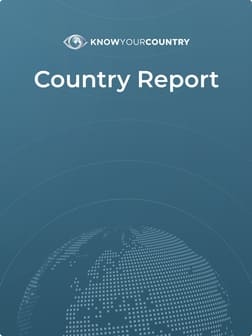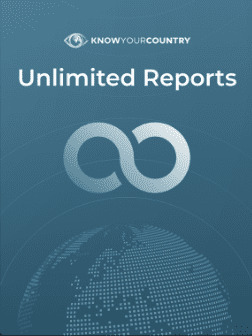
Tajikistan Country Summary
Sanctions
No
FATF AML Deficient List
No
Terrorism
Corruption
US State ML Assessment
Criminal Markets (GI Index)
EU Tax Blacklist
Offshore Finance Center
Background Information
Anti Money Laundering
FATF Status
Tajikistan is no longer on the FATF List of Countries that have been identified as having strategic AML deficiencies
Latest FATF Statement - 24 October 2014
The FATF welcomes Tajikistan’s significant progress in improving its AML/CFT regime and notes that Tajikistan has established the legal and regulatory framework to meet its commitments in its action plan regarding the strategic deficiencies that the FATF had identified in June 2011. Tajikistan is therefore no longer subject to the FATF’s monitoring process under its on-going global AML/CFT compliance process. Tajikistan will work with EAG as it continues to address the full range of AML/CFT issues identified in its mutual evaluation report.
Compliance with FATF Recommendations
The last follow-up Mutual Evaluation Report relating to the implementation of anti-money laundering and counter-terrorist financing standards in Tajikistan was undertaken in 2021. According to that Evaluation, Tajikistan was deemed Compliant for 7 and Largely Compliant for 22 of the FATF 40 Recommendations. The Effectiveness & Technical Compliance ratings were not assessed and it remains Highly Effective for 0 and Substantially Effective for 3 of the Effectiveness & Technical Compliance ratings.
US Department of State Money Laundering assessment (INCSR)
Tajikistan is categorised by the US State Department as a Country/Jurisdiction of Primary Concern in respect of Money Laundering and Financial Crimes.
Overview
Money laundering in Tajikistan is associated with criminal activities such as corruption, bribery, embezzlement, and drug trafficking. Tajikistan serves as the main transit country for Afghan opiates smuggled to Russia, Belarus, and some European countries. Recently, Tajikistan has made significant efforts to improve its anti-money laundering/combating the financing of terrorism (AML/CFT) regime to reduce the risk for money laundering and terrorist financing.
Sanctions
There are no international sanctions currently in force against this country.
Bribery & Corruption
Rating (100-Good / 0-Bad)
Transparency International Corruption Index 20
World Governance Indicator – Control of Corruption 6
Corruption is a serious obstacle for companies operating or planning to invest in Tajikistan. It permeates almost all sectors of the economy. Networks of patronage and clientelism also impede a competitive business environment, and bribery and gifts are widespread practices and an established way of doing business. The government has established the necessary legal anti-corruption framework to curb corruption, criminalizing passive and active bribery, extortion, money laundering and other offenses. Nonetheless, enforcement of the law is poor and selective, and government officials engage in corruption without fear of repercussion, provided they do not fall out of favor with the ruling elite. For further information - GAN Integrity Business Anti-Corruption Portal
Economy
Tajikistan is a challenging place to do business but presents potential high-risk, high-reward opportunities for foreign investors who have experience in the region, a long-term investment horizon, and the patience and resources to conduct significant research and due diligence. At the most senior levels, the Tajik government continues to express interest in attracting more foreign investment. In October 2022, the U.S.-Tajik Business Council in partnership with the Tajik Government and the U.S. Embassy in Dushanbe hosted a United States-Tajikistan Private Business Roundtable to explore business and investment issues facing U.S. companies in Tajikistan. Also in 2022, the government hosted international business delegations from Russian, Iranian, Belarusian, and South Korean companies. Nevertheless, the poorest of the Central Asian countries has few U.S. investors and remains a largely uncompetitive investment destination.
President Emomali Rahmon publicly emphasizes the need to foster private-sector-led growth, and his administration prioritizes attracting investment in national development strategies, especially investment in industrialization, technological development, fintech, and moving Tajikistan’s agriculture and light industries up the value chain. These strategy documents notwithstanding, authoritarian policies, bureaucratic and financial hurdles, widespread corruption, a flawed banking sector, and countless business and tax inspections greatly hinder investors, according to the business community. The government’s commitment to dedicate significant financial resources to the construction of the Roghun Dam hydropower plant creates pressure for the Tax Committee to enforce or creatively interpret arbitrary tax regulations in order to meet ever-increasing revenue targets.
Politics also play a role. Remittances sent by Tajik labor migrants historically have accounted for the equivalent of one-third of Tajikistan’s GDP, and the Russian Federation uses this leverage to ensure Tajik support for Russian foreign policy priorities, and/or to exert pressure on Tajikistan to join the Russian-led Eurasian Economic Union. Tajikistan is also saturated in opaque loans connected to the People’s Republic of China’s Belt and Road Initiative. According to the official statistics, Chinese investments accounted for more than 99.8 percent of the country’s Foreign Direct Investment in 2022. Despite Tajikistan’s 2013 accession to the World Trade Organization, the Tajik government has imposed trade policies to protect private domestic interests without notifying its partners, notably in the poultry, mining, and alcoholic beverage sectors.
The COVID-19 pandemic laid bare endemic transport and infrastructure challenges in landlocked Tajikistan, imposed by geography but exacerbated by political isolation as borders with Afghanistan (following the Taliban’s return to power) and the Kyrgyz Republic (following deadly April 2021 border clashes) remain closed. Tajikistan’s rigid economy represents another systemic barrier as analyses show growth is consistently driven by remittance-fueled consumption and exports are concentrated in mining, metals, and agriculture, making Tajikistan especially vulnerable to commodity shocks in world markets.
Despite these challenges and risks to potential investors, Tajikistan is pursuing greater trade and investment links and has made modest progress on trade facilitation and tax reform to improve its investment climate in past years. In 2022, authorities continued small steps towards compliance on intellectual property rights protections. Should the government pursue an economic reform path, opportunities in energy, agribusiness, food processing, tourism, IT, and mining could prove promising.
Country Links

Buy Full Tajikistan Report
$25 one time payment
- Risk Analysis
- Corruption
- Economy
- Sanctions
- Narcotics
- Executive Summaries
- Investment Climates
- FATF Status
- Compliance
- Key Findings

Unlimited Reports
$40 Monthly
